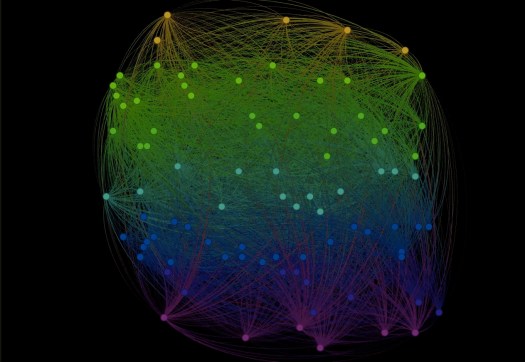What is the nature of the data problem?
We now live in a world where our every purchase, every non-purchase, every curiosity, every tweet and “like”, every movement, is being tracked. Like it or not, We are Data. We are the customer, but our data are the product. Right now, we’re at a critical juncture where we can use our data to empower people to topple dictators, or empower dictators to suppress citizens. We can broaden economic opportunity by empowering micro-entrepreneurs, or further consolidate resources in the hands of a few. Once we are able to identify the data we generate, how we store it, who has access to it, and how we use it, we will more likely benefit from the explosion of data we generate, while avoid being harmed by it.
What does it mean to “increase the vibrancy” of data and to “democratize data”?
To quote Jon Gosier, “Vibrant data is data that doesn’t exclude participation from people that lack expertise.” Right now most people have very little, if any, control over all the personal data they generate — and large corporations are battling for control of this valuable information. For the privileged, maybe it just means dealing with a few more targeted ads, but for others it could mean unwarranted surveillance, profiling, discrimination … even imprisonment or death. Increasing the vibrancy and democracy of data means enabling everyday people to benefit more directly from the explosion of data, while also avoiding negative consequences. Doing that requires considering challenges at all stages of the “life cycle” of data — from how we generate data and store it to how we access it, share it, find meaning in it and derive value from it.
How did you and David Gurman go about starting to map this problem?
The cool thing is that we didn’t map anything! We mobilized a community to map the “ecosystem” of this complex problem — in other words, are all the moving parts to the problem, and how they influence one another.
To do that, we collaborated with Juliette Powell (The Gathering), Emily Aiken (The Story Studio), Jerri Chou (The Feast) and a research group at Intel Labs to extract information from a community. The first challenge was simply to identify all the moving parts, which we called the “mini-challenges,” to democratizing data. So we interviewed a community of experts that ranged from cyberluminaries like JP Barlow, Bill Joy and John Batelle, and a group of TED Fellows working on the front lines of data for social good. We asked them: “What are the biggest challenges to democratizing data?” From those conversations, we broke up the big problem into about 90 mini-challenges.
Then David and his team at Brainvise were key to developing an online tool, the Tru North MAPPR, to enable a community to remotely map how all these challenges are related. With that tool, people identified where solving one problem has a strong influence on another — either by making it better or worse. In the first phase, which lasted less than two weeks, I was blown away that a community of about 40 people voted on over 6,500 links between the 90 mini-challenges to create a network of ~3,800 links (many with multiple votes). We partnered with Sean Gourley’s new company, Quid, to visualize this network. To my knowledge, it’s the first ever crowd-mapped network of a complex problem!
And what did you discover?
From the structure of that network, we identified four Grand Challenge areas for democratizing data: Digital Infrastructure (broader access to the underserved), Digital Trust (protection of personal identity, and reputation systems for accountability), Digital Literacy (widespread access to intuitively asking questions with data and thinking critically about the answers) and Platform Openness (the ability to copy, edit and customize platforms that facilitate finding meaning from data). I think we did an amazing job identifying some key areas at the foundation creating a longer-term, more vibrant data ecosystem that benefits more people and encourages more people to participate.
These Grand Challenge areas are still really broad and will continue to evolve with more input on vibrantdata.org. But they were defined by a community, and they target problems that, if solved, could solve many others. Right now, we are calling for more people to join us in the problem mapping — to grow it and see how our understanding of the problem evolves with more input.
Can the Tru North MAPPR be repurposed to solve other complex problems?
Yes, and that’s the exciting thing. This tool we’ve created can be customized for other types of problems. At Tru North Labs we are at the same time exploring the frontier of network science — there are still big unanswered questions about what we can decipher from the structure of a complex network about how it operates and what controls it. And ironically, some of the theory I’m working on suggests that the more complex the problem, the more difficult it has been to change, the more “diffuse” its control, the easier it might be to understand. My goal is to get others interested in this general approach to having community input on “breaking down” ANY complex problem — whether it’s conflict in the Middle East or climate change — and collectively defining some important challenges in need of creative attention.

Comments (8)
Pingback: Vibrant Data
Pingback: The Big Vibrant Data Revolution | UnboundID Blog
Pingback: Intel Links Its Brand To Personal Data Rights | Let My Data Go!
Pingback: Data Vibrancy: Pursuing a Full Spectrum : Beyond Search
Pingback: Quora
Pingback: TED Blog | Fellows Friday: The Vibrancy of Data | education_prospector